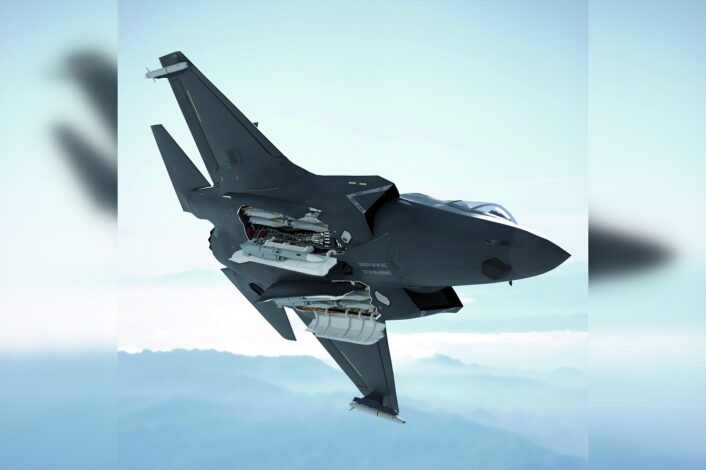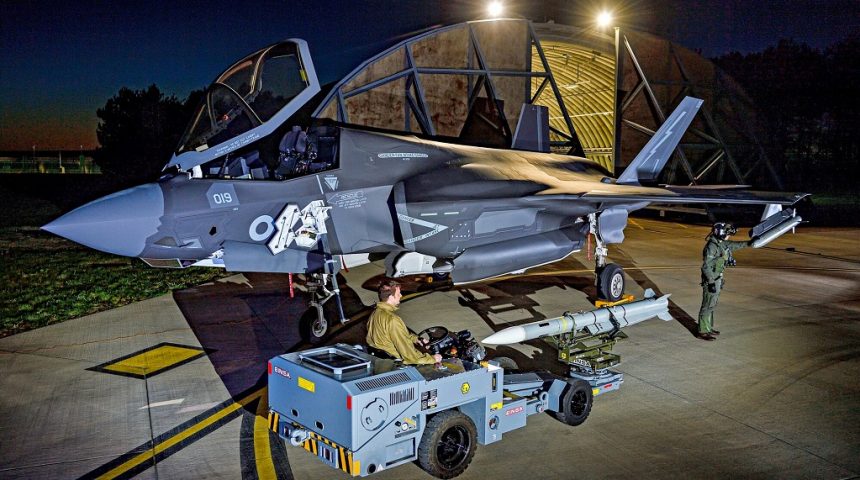The two countries will complete the integration of the Meteor air-to-air missile and SPEAR 3 air-to-surface missile on both the F-35A and F-35B.
BAE Systems and MBDA have been awarded a program to complete the integration of new weapons on Italian and British F-35 Lightning II 5th gen aircraft (note: the British F-35B are simply called Lightning not Lightning II). The additional funding that comes with this new contract will allow the continuation of the first development works started in 2019 by BAE Systems, Lockheed Martin and MBDA to upgrade the UK F-35 weapon systems with the Meteor air-to-air missile and the SPEAR 3 air-to-surface missile.
“Advanced weapons systems, such as Meteor and SPEAR, will provide the UK and Italian armed forces with an operational advantage,” said Tom Fillingham, Senior Vice President for US Programmes at BAE Systems’ Air Sector. “Our highly skilled engineers have a crucial role across the entire F-35 programme and as part of this integration activity, and we look forward to continuing to work alongside our partners as it progresses.”
The contract will see the completion of the integration activities on the Italian and British F-35A and F-35B of the Meteor Beyond Visual Range (BVR) radar-guided air-to-air missile, which is already operational on both countries’ Eurofighter Typhoons. As you may know already, the Italian Air Force operates both the F-35A and F-35B, while the Italian Navy, the Royal Air Force and, in future, the Royal Navy operate the F-35B only.
Here is what we wrote about the Meteor air-to-air missile in a previous article here at The Aviationist:
The missile was developed by a group of European partners led by MBDA to meet the needs of the UK, Germany, Italy, France, Spain and Sweden. Considered one of the most lethal BVR missiles available today, Meteor is powered by a ramjet propulsion system, a solid fuel, variable flow, ducted rocket.
The advantage over a standard rocket motor, like the one used by the AIM-120 AMRAAM, is that the ramjet is throttleable, meaning that the missile can throttle back its engine during cruise and then throttle up at close distance from the target to obtain the highest possible energy state during the terminal attack.
This way, Meteor can provide a larger No-Escape Zone without losing precious energy while countering the target’s defensive manoeuvres. A datalink provides mid-course updates about the target sent by the launcher aircraft to increase the Probability of Kill (Pk). The missile is equipped with both impact and proximity fuses and a fragmentation warhead to maximise the lethality. Meteor has currently been integrated on the Typhoon, Gripen and Rafale and is scheduled to be integrated on the F-35.

Earlier this year, Meteor was declared operational also on the Rafale, with the French Air and Space Force performing the first operational flight with live missiles in March, following the F3-R upgrade. The Dassault Rafale became the third aircraft to be declared operational with the BVR missile, after the Saab Gripen and the Eurofighter Typhoon. The F-35 Lightning II is now scheduled to become the fourth aircraft to be integrated with this missile.
The second weapon to be integrated is the SPEAR 3 (Selective Precision Effects at Range Capability 3) air-to-surface missile, which has been selected as the primary air-to-ground weapon of the Royal Air Force and Navy F-35B. The weapon is expected to achieve the Initial Operational Capability (IOC) over the next seven years, with initial flight testing on the Typhoon before moving on to the F-35B. Here is what we wrote earlier this year about the SPEAR 3:
The weapon has been defined as a network-enabled miniature cruise missile, with a range in excess of 140 km (87 miles or 75 NM), which integrates technology from the Brimstone 2 missile, also known as SPEAR 2. For the sake of completeness, SPEAR 1 is the Paveway IV dual mode GPS/INS and laser-guided bomb, already integrated on the F-35B, unlike the Brimstone. One of the main differences of the SPEAR 3 from the Brimstone is the presence of folding wings.
According to a Royal Navy press release, the missile weights under 90 kg (200 lb) and is 1.8 meters long, capable of flying at high subsonic speeds powered by a turbojet engine (reportedly the Pratt & Whitney TJ-150-3). The SPEAR 3, according to MBDA, allows an attack with high precision and low chance of collateral damage at stand-off ranges with a cost-efficient missile, against a very broad range of surface targets, guided by a multi-mode seeker (reportedly millimeter-wave and semi-active laser seekers derived from the Brimstone 2) and ING/GPS. The F-35B can carry eight of these munitions internally, using racks similar to the ones of the GBU-39 and GBU-53 Small Diameter Bombs.
Regarding the network enabled capability, the SPEAR 3 has a two-way datalink that allows mid-course updates, retargeting and abort functions. MBDA also reports that the weapon can be employed in a fire-and-forget mode, semi-active laser designation mode (requiring continuous target lasing with a targeting pod or the F-35’s Electro-Optical Targeting System) and in a fully network enabled mode.
Another variant of the SPEAR 3 currently in development is devoted to the Electronic Warfare (EW) and Suppression of Enemy Air Defenses (SEAD)/Destruction of Enemy Air Defenses (DEAD) missions. This variant, called SPEAR-EW, was first announced in 2019 and is being developed by MBDA in partnership with Leonardo, as it will integrate the latter’s Digital Radio Frequency Memory (DRFM) miniaturized EW payload.
Right now, it seems that the air-to-surface weapon will be used only by the British F-35Bs but, as we reported in January, Italy has shown interest in the SPEAR 3, according to UK MoD officials. However, the latest multiyear defense planning document (Documento Programmatico Pluriennale della Difesa) for 2021-2023 published by the Italian government does not include any mention of the SPEAR 3 munition, focusing only on Meteor and AARGM as new weapons and the sustainment of the weapons already in service.









